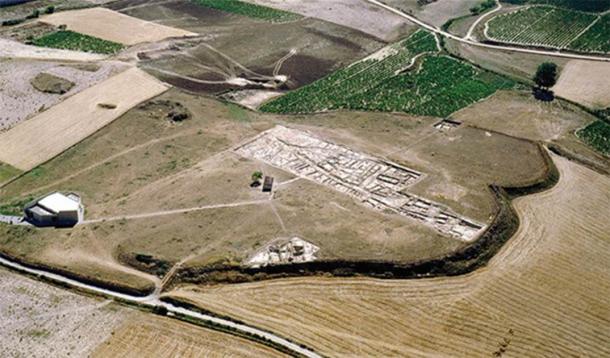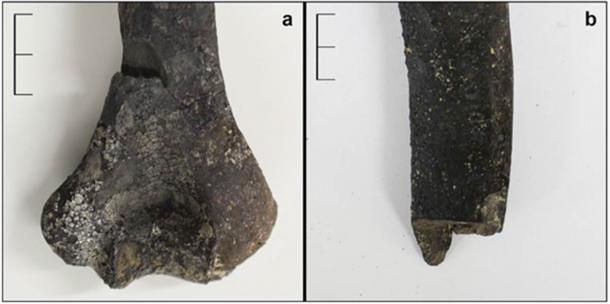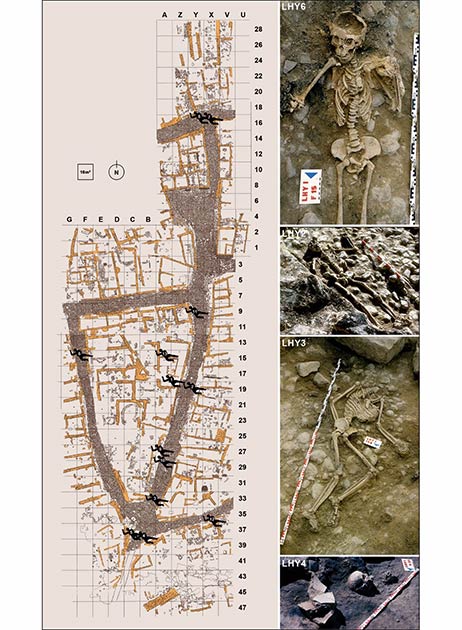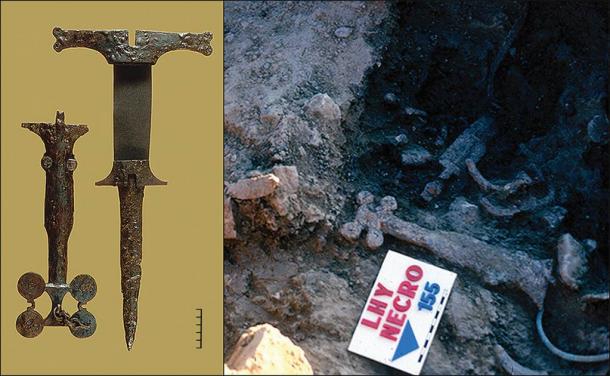
Prehistoric Spanish Massacre Rewrites the History of War in Europe
A study of victims of a Spanish prehistoric massacre is providing researchers with new insights into the evolution of warfare. Archaeologists have found evidence of a sacked settlement and the brutal slaughter of most of its inhabitants, including women and children. The Spanish prehistoric massacre evidence changes the view that large-scale warfare was introduced into Iron Age Europe by Rome.
La Hoya was a very important Iron Age town in what is now the Basque Country in northern Spain. Because of its location, in the Ebro River valley, La Hoya flourished, and archaeologists have found evidence that it had streets, large buildings and defensive walls. Based on archaeological evidence, the site was ruled by a warrior aristocracy, who engaged in long-distance trade. It is believed that the “site was within territory controlled by the Berones,” a war-like Celtic people, reports Antiquity. Then one day about 2300 or 2200 years ago the town was attacked, and it was wiped off the face of the earth. This single Spanish prehistoric massacre completely rewrites the timeline of warfare in Europe, taking the spotlight off the Romans.

Aerial view of La Hoya, site of the Spanish prehistoric massacre. (A. Llanos / Antiquity Publications Ltd)
The Brutality Of The La Hoya Prehistoric Spanish Massacre
La Hoya was first unearthed in the 1950s and it was only systematically investigated in the 1970s. A recent study led by Teresa Fernández-Crespo of Oxford University and her colleagues examined some 13 remains found in the settlement, which clearly showed signs that they had been burned between 300 and 150 BC. The individuals had been burnt where they had fallen and the researchers wrote in Antiquity that the “deposition of skeletal material is inconsistent with funerary cremation.” These people had been left in the street and burned possibly when the settlement was set on fire.

Burned bones found at the Spanish prehistoric massacre site. (Antiquity Publications Ltd)
The research team used osteological methods and pathological tests to understand how the deceased had died. These revealed some grizzly finds and evidence that the deceased had all met brutal deaths. The researchers noted that one male skeleton found under a collapsed house had injuries that “may be tentatively interpreted as sharp force traumas resulting from an attack with a bladed weapon.”

A map of where the victims were found at La Hoya, along with photos of some of them. (A. Llanos, modified by J. Ordoño / Antiquity Publications Ltd)
Missing Heads At The La Hoya Site: Trophies Of War?
At the Spanish prehistoric massacre site, the skull of a male was missing from its skeleton, which may indicate the victim was decapitated. “The fact that no skull was found may be tentatively seen as evidence for headhunting practices,” states the report. It was quite common in ancient times for the head of slain enemies to be taken as trophies. Furthermore, a male and a female teenager had their arms cut off with weapons. In the instance of the female adolescent, it appears that she lived for a period after the amputation.

Some massacre injuries did not kill the victims immediately, and they survived for some time after the attack. (Antiquity Publications Ltd)
The researchers wrote in Antiquity that much is unknown about “the case of La Hoya, including the identity of the attackers and any previous history of violence involving this community.” Moreover, the osteological and pathological results indicate that the dead were the victims of a planned and merciless attack. The research team reports that the evidence “support the hypothesis of a surprise attack, resulting in the indiscriminate and brutal killing of helpless or unresisting people, including adult males and females, as well as children.”

Amputated right hands, still with their bracelets (left side). And the rib of an individual showing a stab wound (T. Fernández-Crespo / Antiquity Publications Ltd)
Early War And Conflict Wiped Out Entire Communities
Previously the skeletons of animals were found in the street, left where they had been killed. It appears that the site was abandoned after the massacre. The original inhabitants were either all killed, enslaved or may have been re-settled in a neighboring center. Researchers believe that the attack may have been carried out by a rival community for control of the strategic settlement. According to the Antiquity press statement, “La Hoya allows us to reflect on the nature and causes of violent conflict in the past as well as today.”
The level of destruction and brutality at the site is shocking. This site is one of the few that provides evidence for large-scale, organized warfare in the Iron Age. The press release noted that “Sites like La Hoya remind us that warfare in the past, as well as the present, affected not just those directly involved, but entire communities.”

Iron Age artifacts recovered from the Spanish prehistoric massacre site at La Hoya, Spain. (Antiquity Publications Ltd)
La Hoya Massacre Says Roman Did Not Invent Large-Scale War
In the past, many historians believed that for much of the Iron Age, that warfare was little more than raiding and feuding. Dr Fernández-Crespo stated that “The new analysis of the human skeletal remains from La Hoya reminds us very forcefully that the prehistoric past was not always the peaceful place it is sometimes made out to be.” Based on the findings from the Spanish prehistoric massacre site at La Hoya, Iron Age warfare appears to have been more brutal and organized than previously believed.
It was previously thought that large-scale and total warfare was introduced into Iberia by the Carthaginians and, especially, the Romans. The Roman legions were feared for their brutality and ruthlessness, and there is ample archaeological evidence for the slaughter of civilians and prisoners by Rome’s armies. The La Hoya evidence shows that “that large-scale, politically motivated violence in Iberia was not necessarily introduced by the Romans,” the research team argued in Antiquity.
- Truth of 7300-Year-Old Violence Uncovered in the Spanish Pyrenees
- Have Humans Always Gone to War?
- The Devastating and Diabolical Ancient Origins of Biological Warfare
This is important as it shows that while Iron Age Iberian communities were not centralized states, like Carthage and Athens, they were capable of waging brutal wars of annihilation. Antiquity reports that La Hoya “presents early evidence of organized, large-scale violence, and provides a unique snapshot of protohistoric warfare.” The latest research indicates that prehistoric societies were not as peaceful as once portrayed and that organized warfare that aimed at total destruction existed before the Romans. This in turn has important implications for the evolution and history of warfare.
The study will be published tomorrow in Antiquity, D.O.I. https://doi.org/10.15184/aqy.2020.161
Top image: Scenes of killing and devastation at the La Hoya Iron Age Spanish prehistoric massacre site in Laguardia, Basque Country, northern Spain. Source: A. Llanos / Antiquity Publications Ltd
By Ed Whelan
















Comments
sounds familiar to an old Irish myth. Could this war have occured befoe some Iberians became Hibernians?